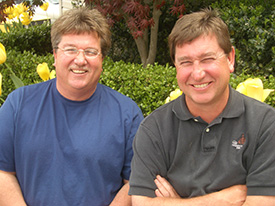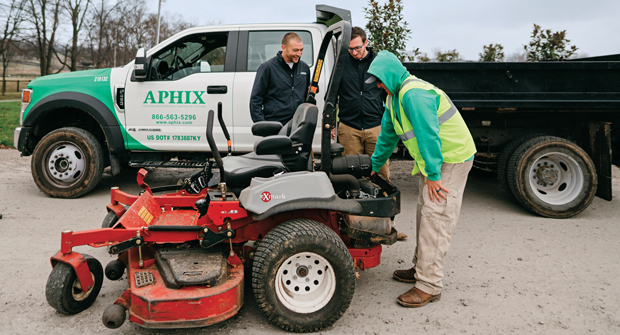No. 64
McHale Landscape Design
Upper Marlboro, Md.

A self-defined “design/build snob,” Kevin McHale didn’t focus on bolstering a maintenance division when he and his brother Steve began McHale Landscape Design 33 years ago.
“We just didn’t see the value of maintenance,” says McHale, president. “We were all about building, designing and constructing things. Maintenance was something somebody else did.”
Which is why after poorly providing maintenance services for two years, the company ditched the segment and referred clients elsewhere.
“We didn’t have the right people in place,” McHale says. “Their background, experience and education were all design/build oriented, and we were asking them to manage maintenance.”
Fast-forward to 2014 and maintenance makes up a quarter of McHale Landscape Design’s $20 million annual revenue. Today, the company values this service segment from multiple viewpoints: It’s a renewable quarterly and/or monthly revenue stream; it allows the company to be a “single source for residential clients;” it ensures the proper upkeep of a design/build project because the company oversees the overall property; and it’s an easy upsell—McHale estimates 92 percent of its maintenance clients began as design/build clients.
To get to that point required the willingness to learn from its mistakes.
It re-implemented its maintenance division 12 years ago, when it was doing $8 million to $9 million in annual revenue. The company used about a decade before that—after it got rid of its first maintenance division—to reevaluate how to create a profitable recurring service.
The solution was to create a strategic plan with a focus on better recruiting. This approach included pinpointing colleges with strong landscape management programs rather than landscape architecture programs to onboard qualified maintenance managers. Pennsylvania State University was its prime target, McHale says.
“We personally didn’t have a passion for (maintenance), so we brought the people in that did,” McHale says. “The whole thing for us was to put the right people in the right places so they could succeed. It didn’t become a benefit for our company until we had the right people in place.”
After integrating the maintenance experts, the company learned from its prior mistake and segmented its maintenance and design/build staffs so it didn’t confuse employees’ mindsets and responsibilities.
With that, McHale deems the company’s second stab at the service a success. Maintenance has grown by 20 percent every year for the past five years.
“If we had understood the effect and benefits of a maintenance division earlier, we would have started one earlier,” McHale says. “Once we put together a strategic plan and recruited the right people for the right job, maintenance became a solid, well-functioning part of our business. We just learned that the hard way.”

